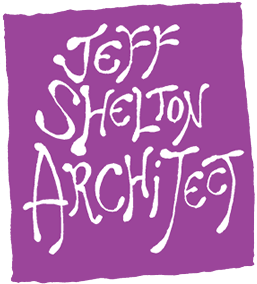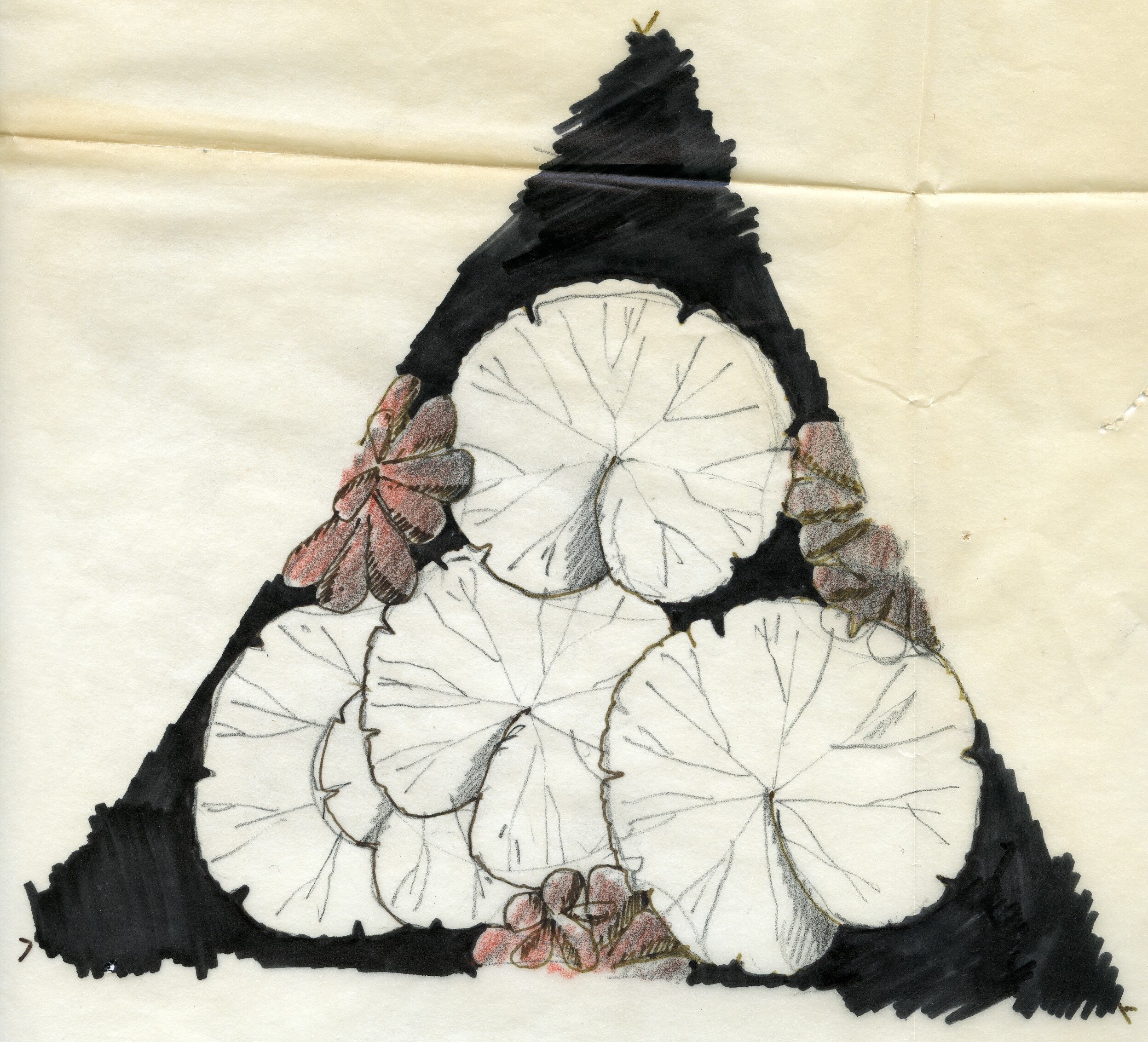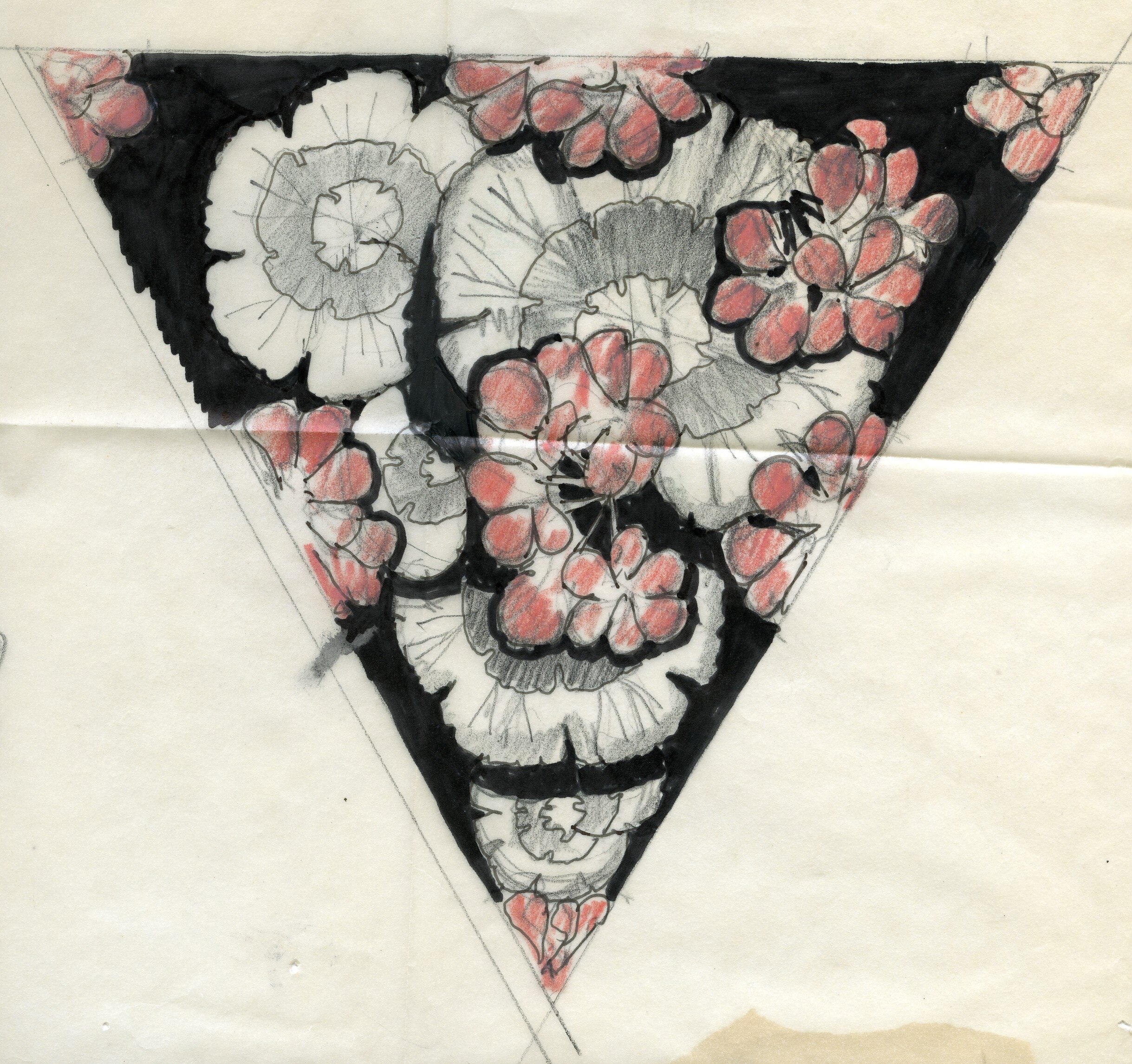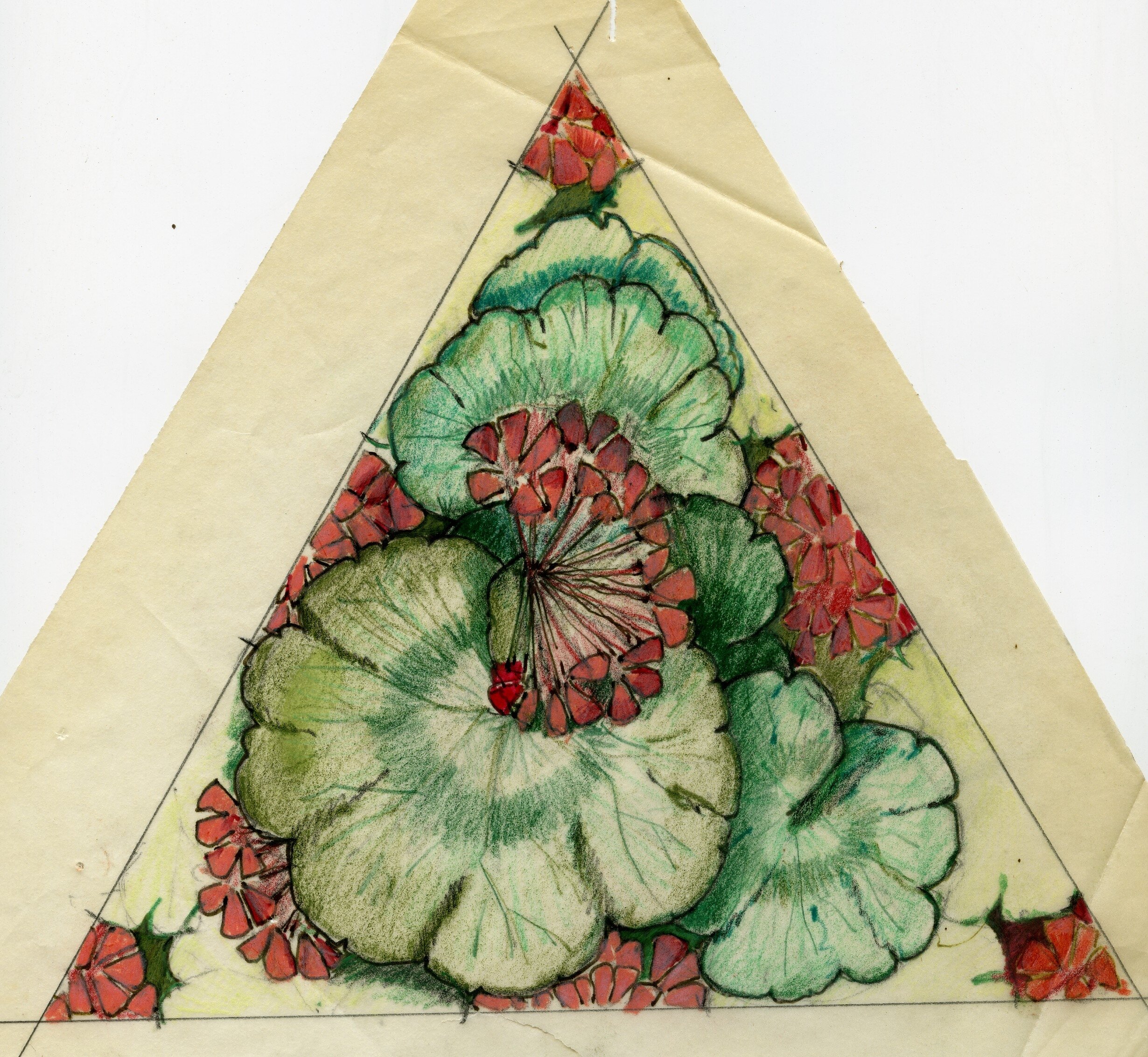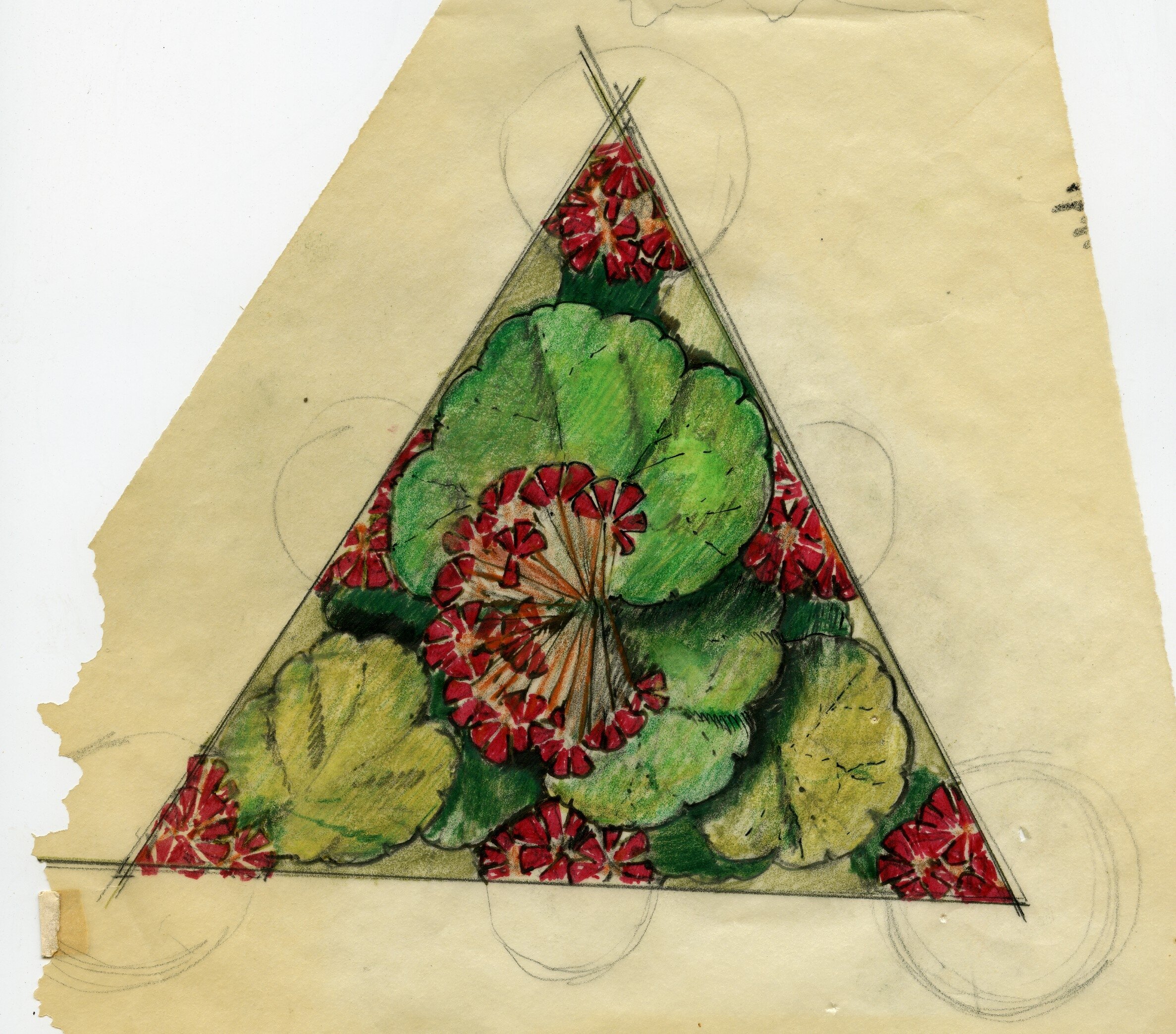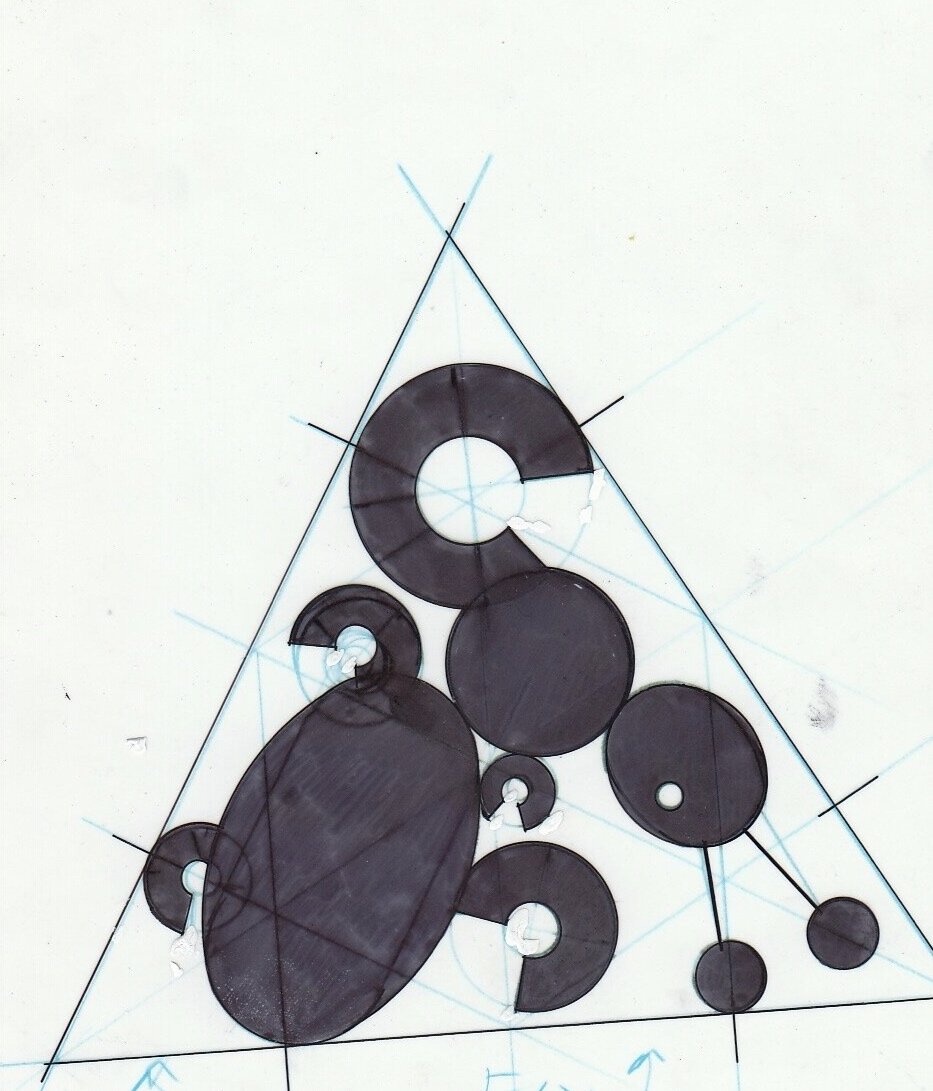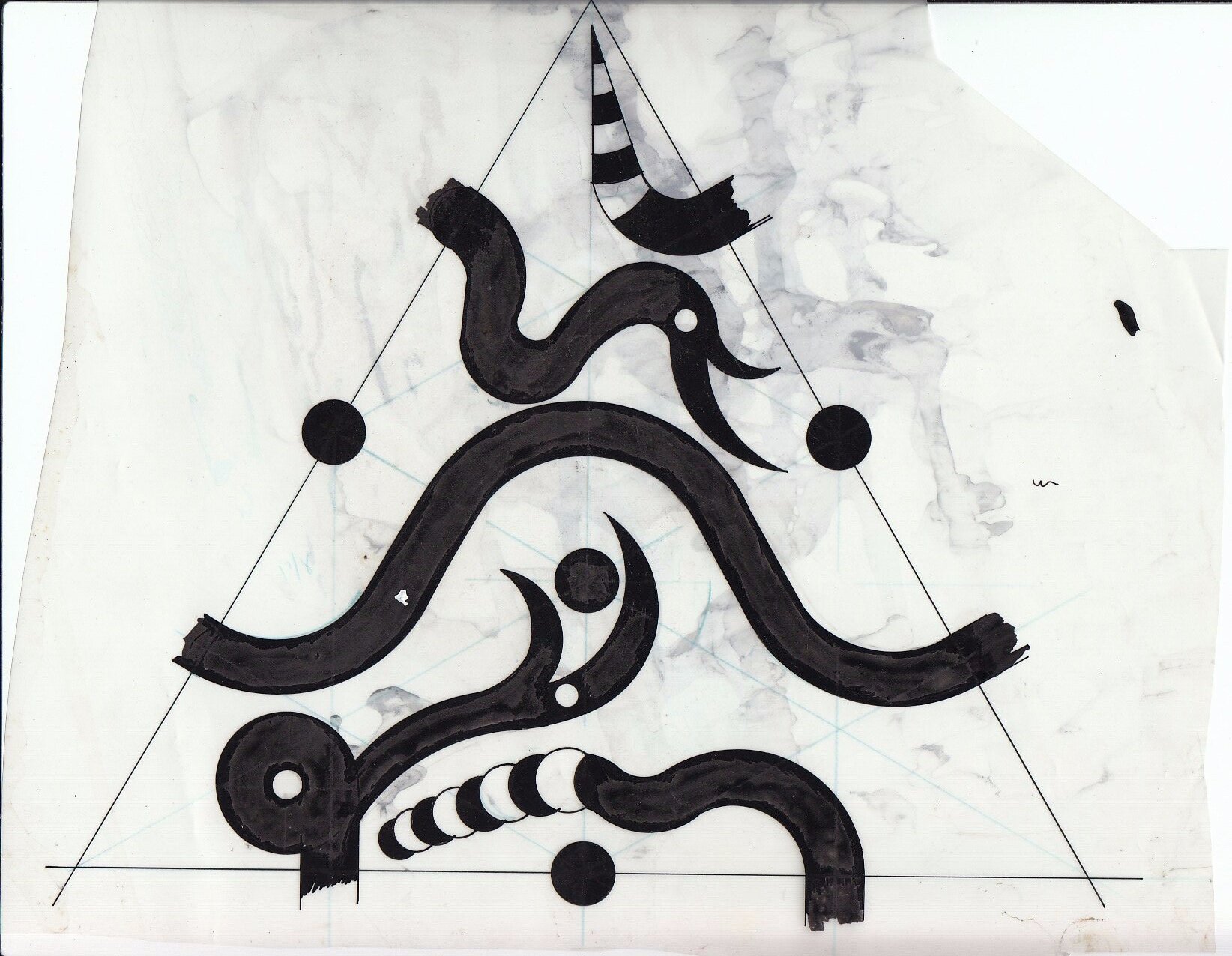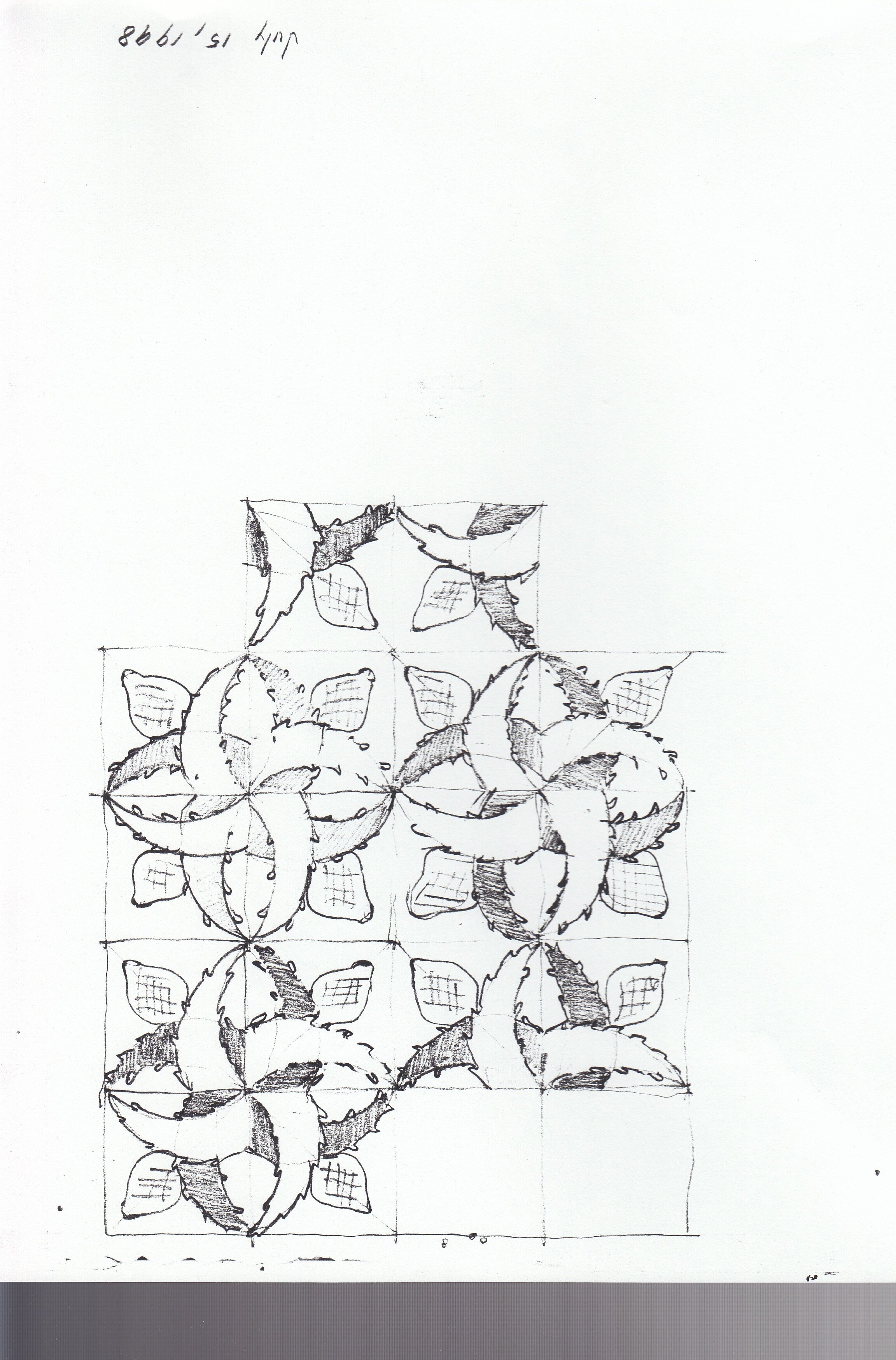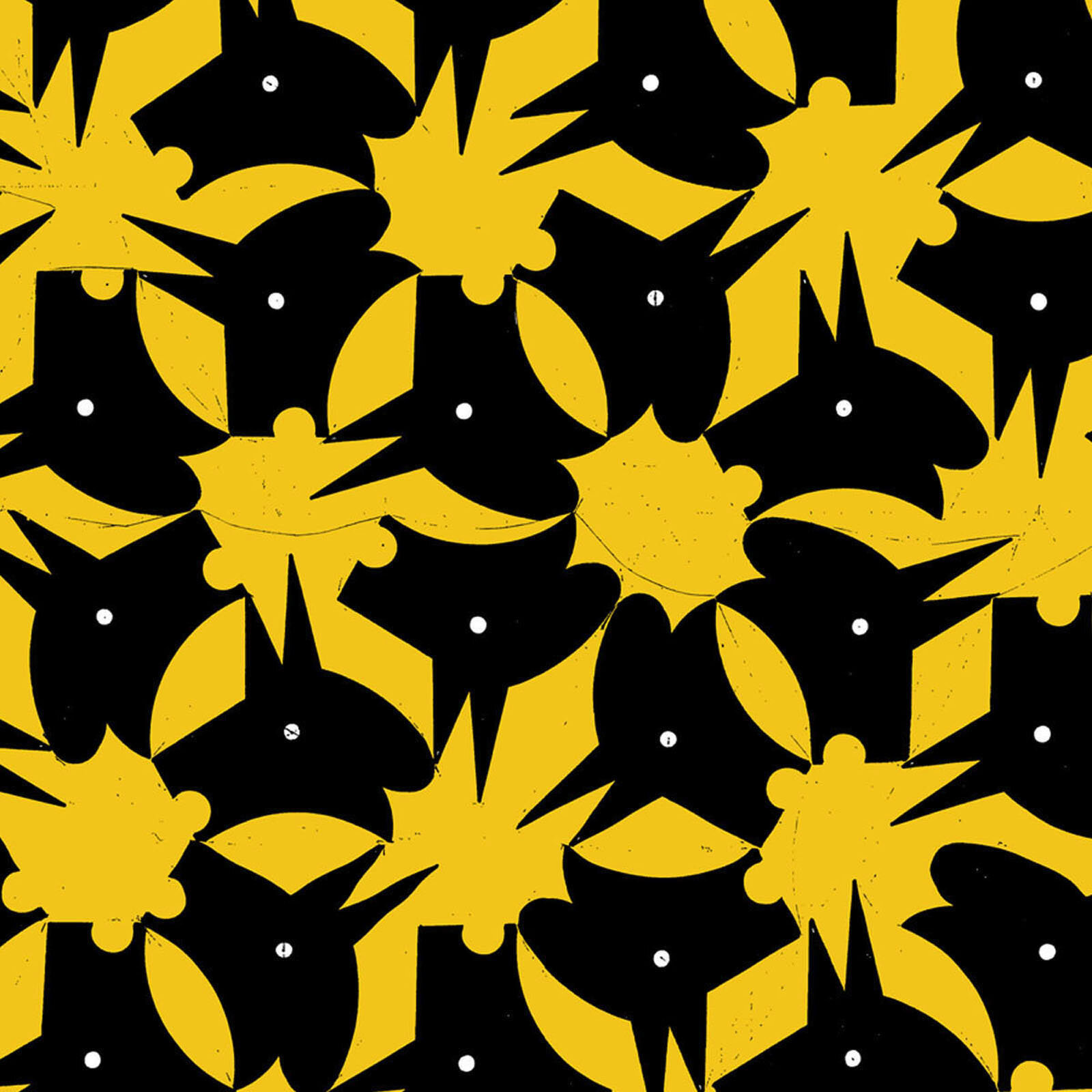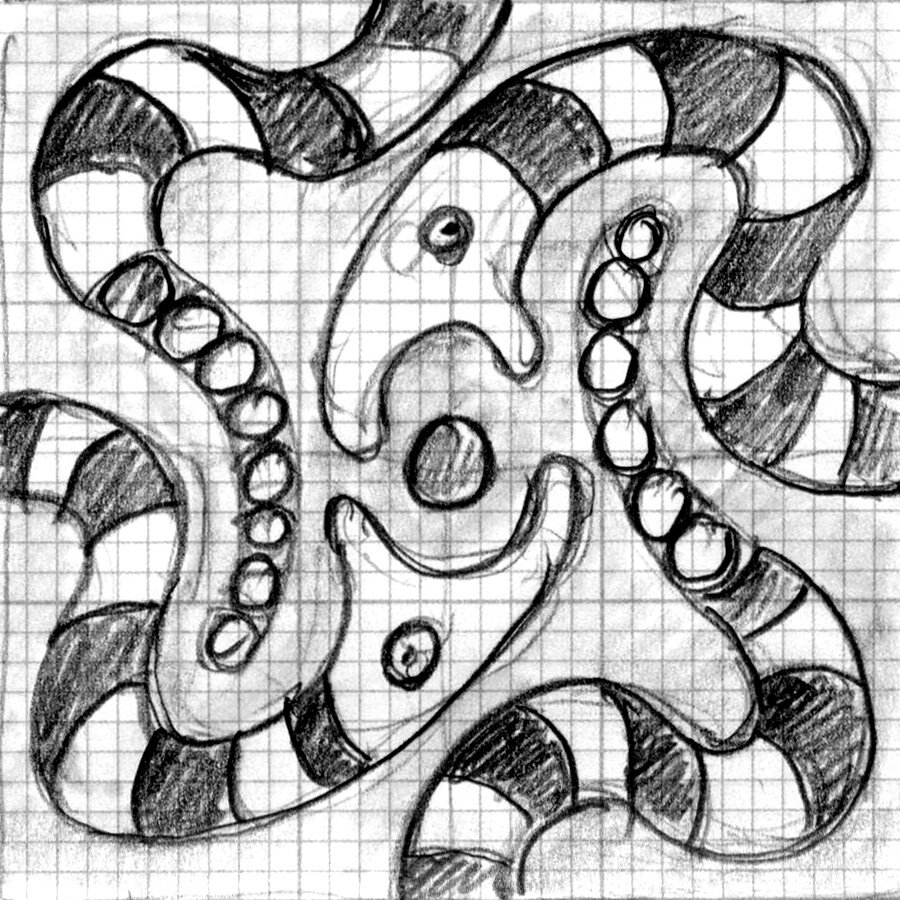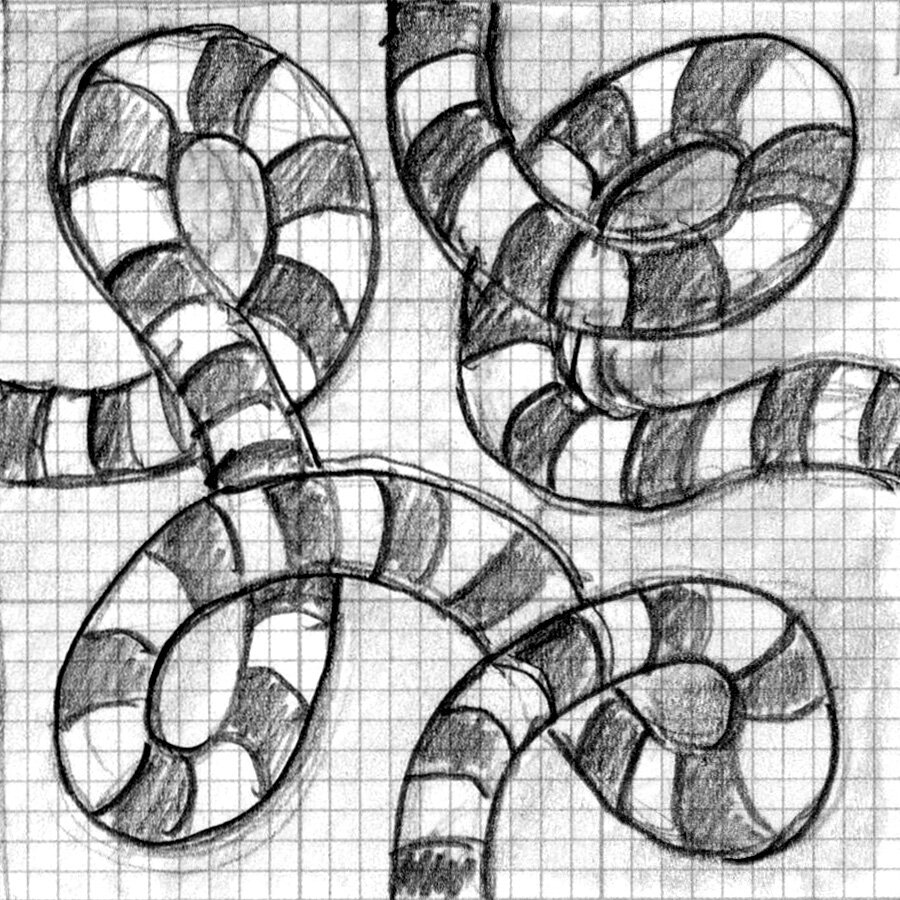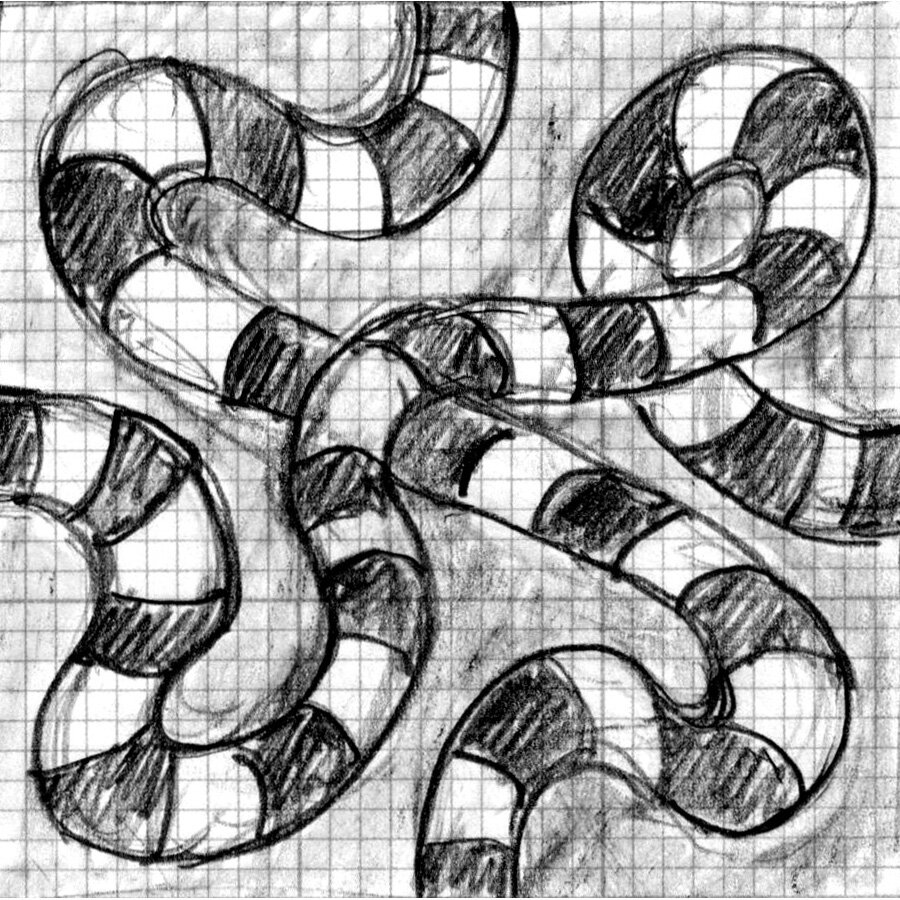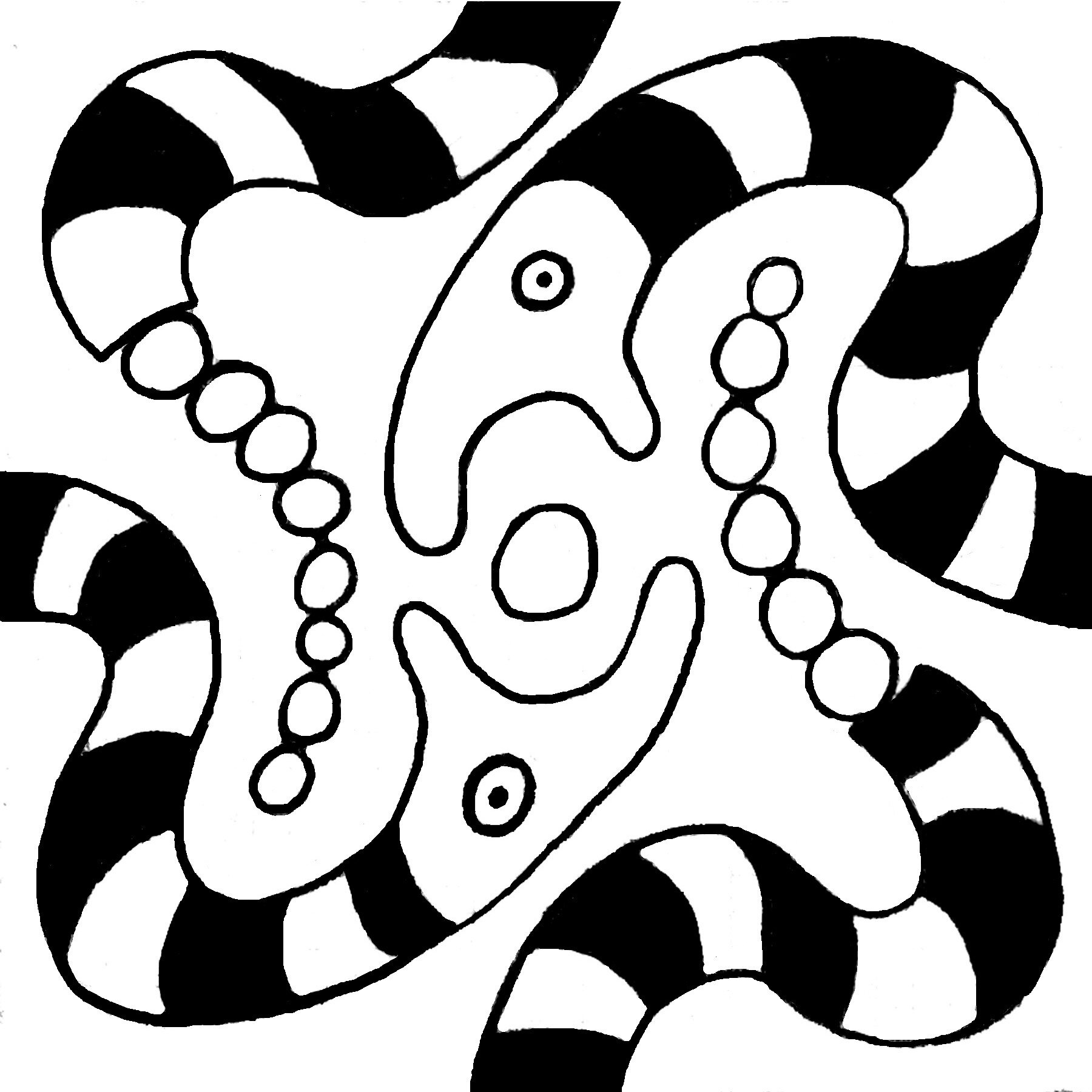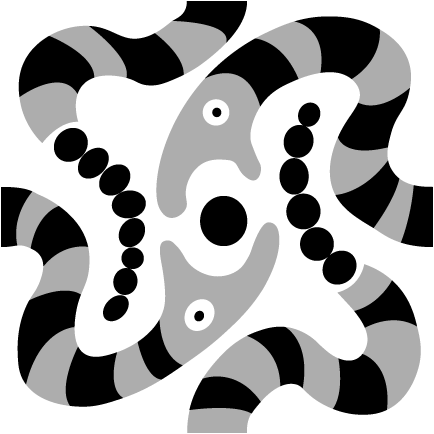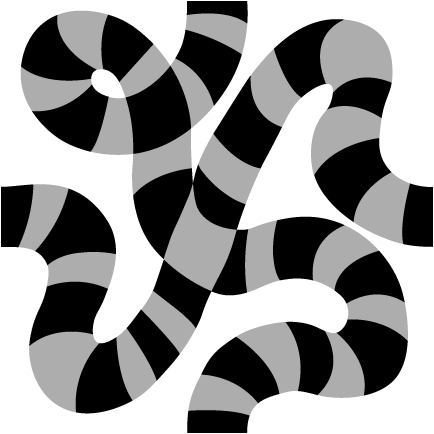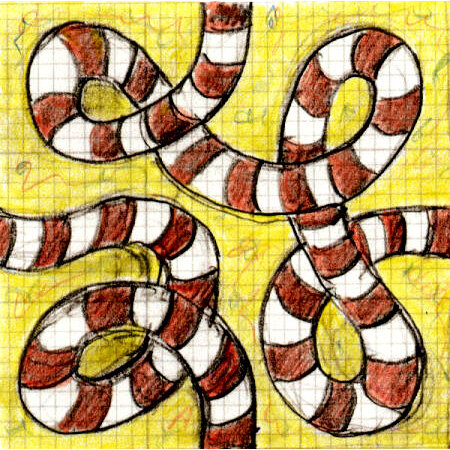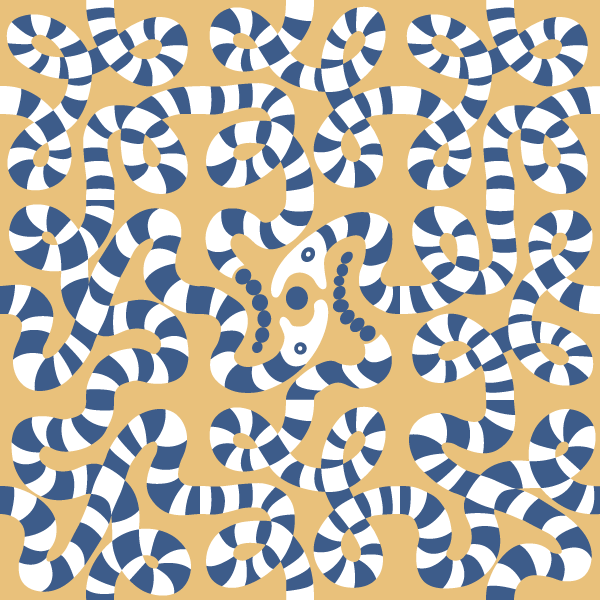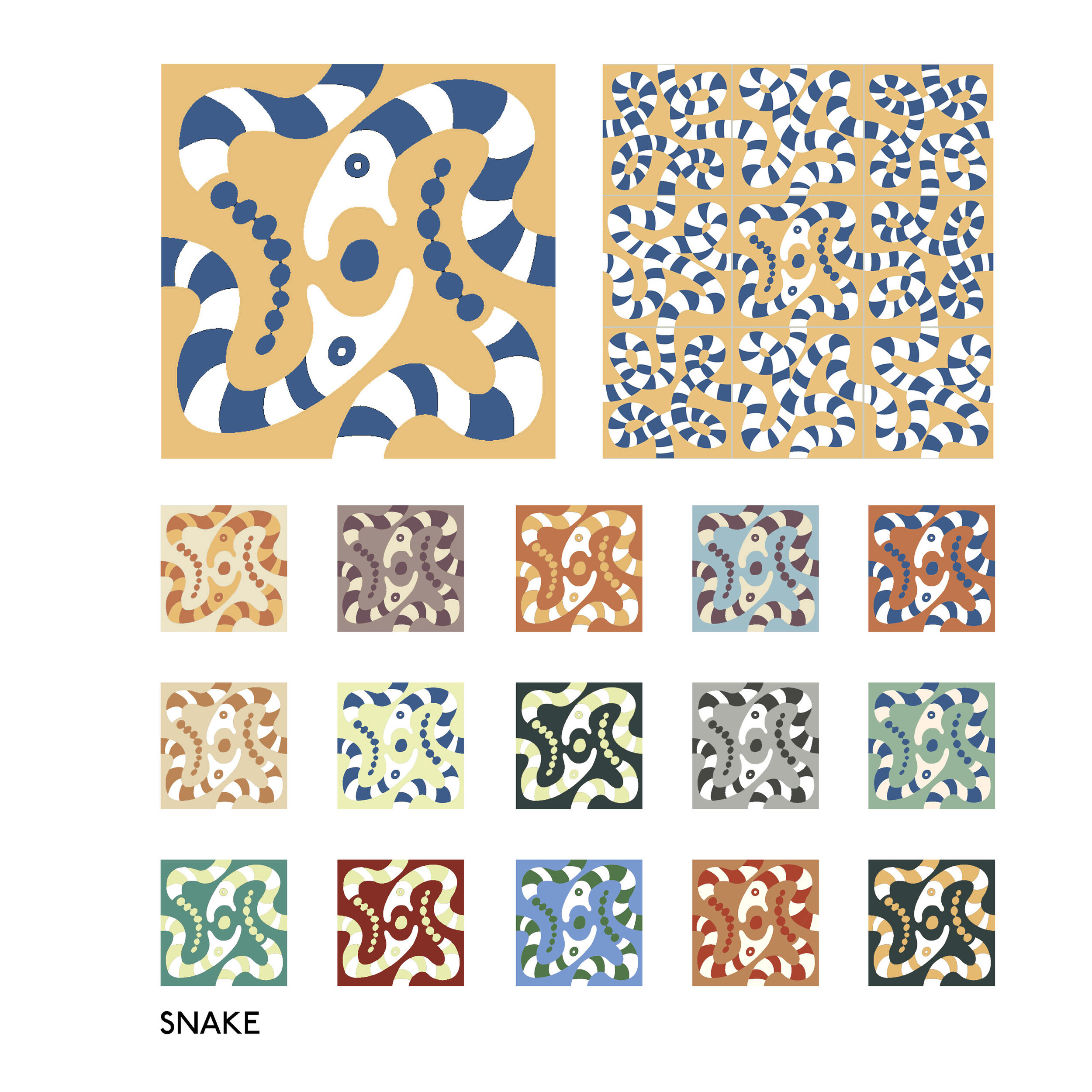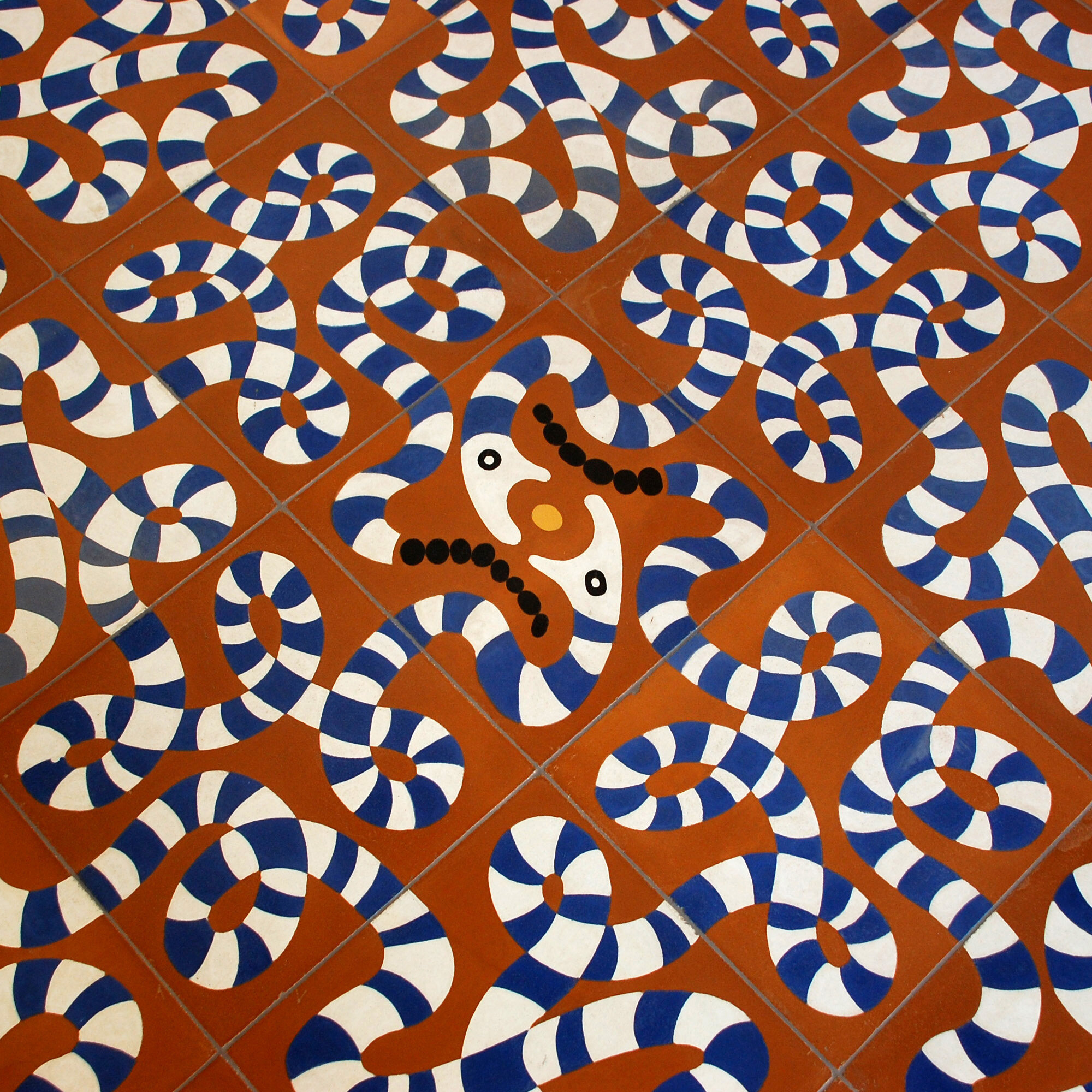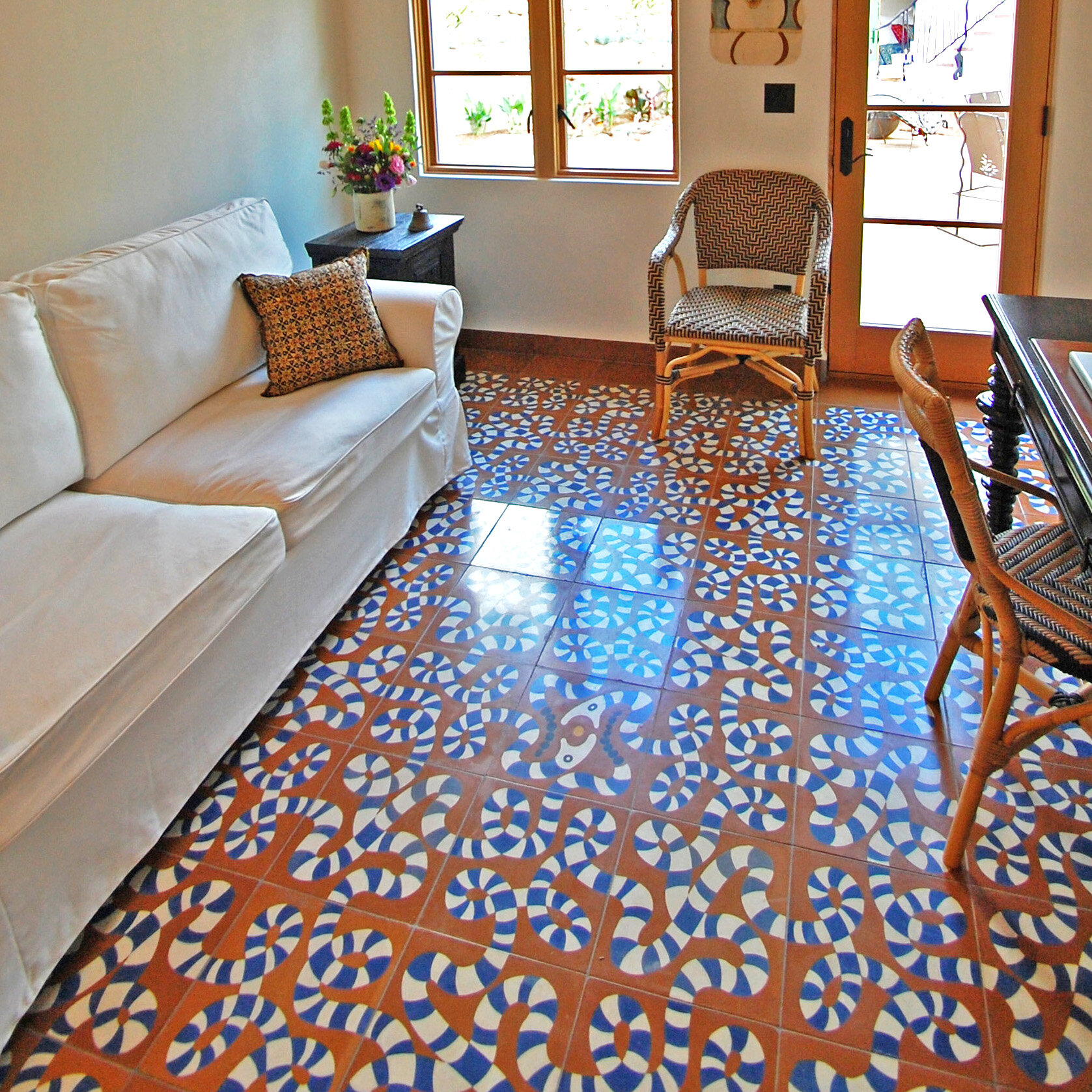Obsession and fascination: How I Started Designing Tile
The Escher puzzle given to me when I was seven
My mother bought me an M.C. Escher puzzle when I was seven and the image is still stuck in my head connecting my thoughts. Fascination with William Morris and the fabric designs of his Arts & Crafts period later motivated me to think about repeatable patterns and tessellation. I first started playing with creating patterns by joining triangles as I was both obsessed with them and fascinated with Buckminster Fuller's career, and had taken courses on Tensegrity Towers and Geodesic Domes. Everything I did in the 80's started with a triangle.
I started designing patterns while looking at Geraniums, another fascination. From flowers, I moved onto ants, snakes and goats. Once I got started creating patterns, the obsession took hold, and down the wormhole I went, unable to put my pencil down as one design lead to multiple others. Any pattern can go almost any direction. A mathematical pattern that is expressed strictly in geometric form can easily be made into a floral pattern or a pattern of insects. There is no end to how far you can take a design.
The triangle base for a pattern has many virtues, but its acute angles also cause strength problems when formed out of ceramic or cement tile. For tile strength issues, I switched my pattern base to a square, and occasionally to a hexagon. The formality and symmetry of patterns adds another layer of thought to architecture, but if used carelessly, the formality and tradition can stifle an idea. Why should I use a pattern that has been used thousands of times before? Do directors use the same soundtrack for each movie or do writers use the same passages in each book? The patterns I continue to enjoy creating have some formality and symmetrical spacing but are also combined with asymmetrical elements that dominate the field, and where each square tile can be laid out in any direction. The idea that a tile can be put down in any direction adds a human element in that each tile setter will make decisions that the next tile setter would not. This creates a phenomenon that embraces formality and tradition, but also results in continual surprises by creating new patterns whenever the tiles are used. Like the other elements of any project, the floor has the touch of the hand that built the building.
In addition, I make sure the lines of the design are handmade, and not over-refined along the way. Early on, when I started having my tile designs made for buildings, I would get phone calls from the manufacturer asking me if it was okay to “straighten out and fix my patterns." I would tell them, “Whatever you do, DO NOT fix anything. Make it like it is when I send it to you.”
Tile design is usually done on stolen time and rarely at the office – on the kitchen table (which we don't have) after dinner, while waiting for a meeting to begin, or my favorite, to be strapped into an airplane seat with nothing to do except draw patterns while time changes underneath me and drinks are served. I begin sketches on grid paper, repeating designs to get an idea of where they’re going. Soon after an idea is born, I will photocopy the single square 9 or 16 times, cut each one out with scissors, and tape them to a new sheet. With all of the tiles together, I can see if the overall design has enough movement, and also if the negative and positive spaces work with all possible arrangements. This process will be repeated until the pattern works, no matter how the squares are laid out. Watercolor or colored pencil will then be added to see what directions work. These days, I get the black and white pattern scanned and start playing with colors.
The snake tile below is actually unusual because it needs three separate tiles to create the twisting creatures, two for the bodies and one that includes the heads and tails.
– Jeff Shelton
